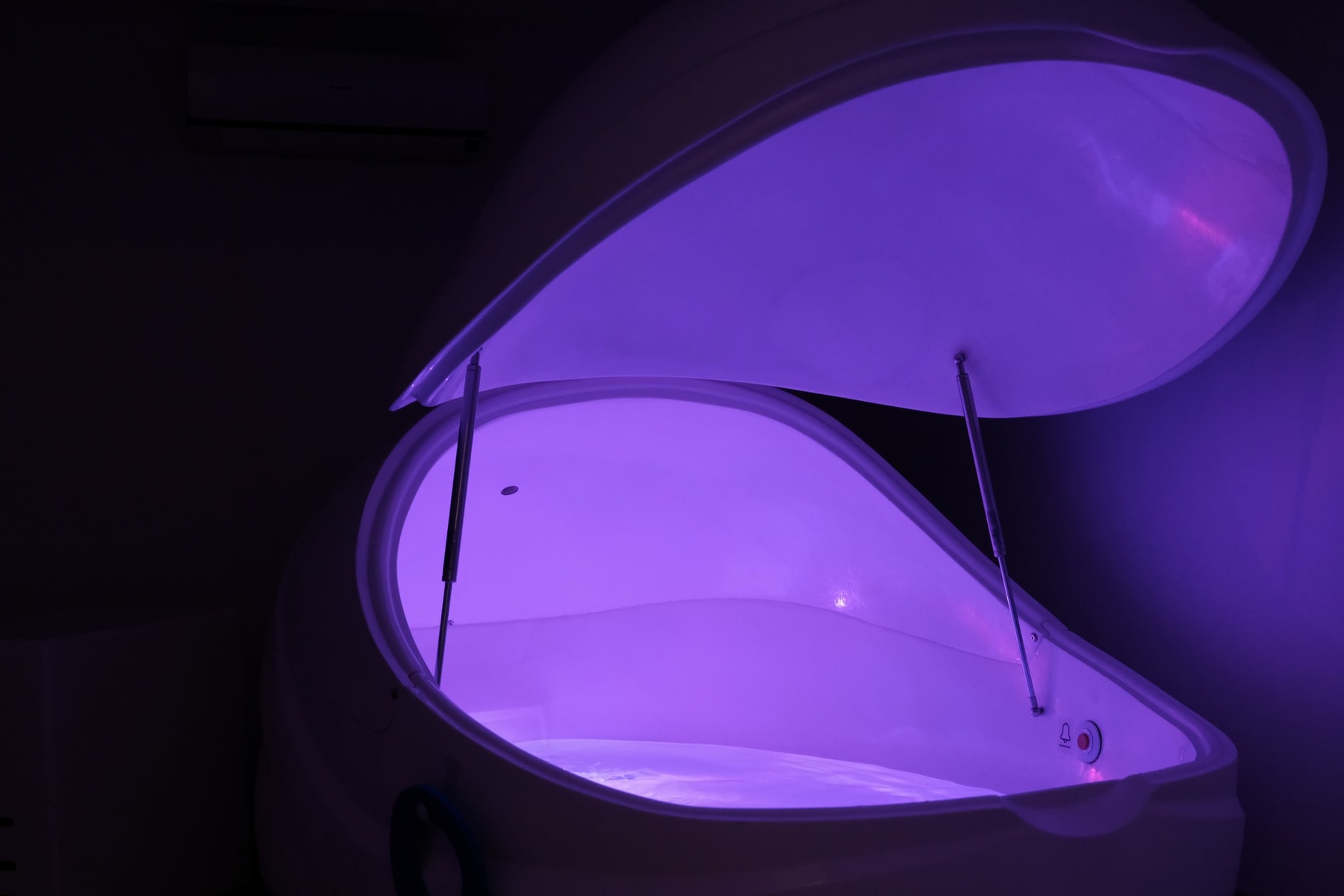Most people know the five basic human senses: sight, hearing, taste, smell and touch. But did you know that neuroscientists have classified as many as 21 different senses, including balance, space and body awareness? There are so many sensations that the human body can experience; we may even encounter sensory overload when our senses are overstimulated. But what would we experience if sensory stimuli were reduced to almost nothing? Why would we do this? Is it even possible? Would it be safe?
One way scientists have achieved this is with the creation of sensory deprivation tanks, or float tanks. American physician and neuroscientist John C. Lilly designed the first float tank in 1954 with the intention of studying the origins of human consciousness by eliminating as many external stimuli as possible. The tanks were filled with lukewarm saltwater, in which a user would float in complete darkness and silence, allowing for no sensory stimuli. In the 1970s, these float tanks were designed for commercial use, the effects and possible outcomes of which were then studied. Scientists found many positive benefits to this kind of short-term sensory deprivation, including increased relaxation, boosted cognition and even using float tanks as a treatment for physical and mental ailments.
Nowadays, float tanks are used around the world in treatment and spa centers as therapeutic apparatuses. Many users boast of the favorable physical and mental effects that time in the tanks has given them. Now, with concrete scientific evidence to back up its benefits, float tanks have grown increasingly popular over the years among everyday people and celebrities alike. Let’s explore the effects of sensory deprivation in float tanks.
Relaxation
Humans need sensory input. However, too much or too little of it has been shown to induce stress and even hinder a person’s physical and psychological functions. People thrive when they receive an optimal level of stimulation. This is why controlled time in sensory deprivation tanks can put the brain in a deeply relaxed state, producing therapeutic effects that can help to better process stimuli when it is received.
As the body relaxes while floating in the tank, brain waves begin to shift from beta waves to theta waves. This change makes the mind go from wakeful awareness to deep relaxation, and then finally to vivid thoughts. Most people say the experience is similar to the moments right before sleep.
The dark and quiet weightlessness of float tanks can put users into a deeper state of relaxation often faster than falling asleep or during meditation. The experience of little to no stimuli can yield improved sleep patterns, mood improvement, lowered stress and alleviated anxiety. Some people say the tanks provide them with more of a sense of calm than a typical massage or a yoga practice session would.
Increased Cognition
Float tanks were designed to induce sensory deprivation, but the brain tries its best to cope for it. The lack of stimuli in float tanks forces the mind to fill in the gaps. Some report that float tanks can induce psychosis-like experiences, though this isn’t as common in people who don’t already experience hallucinations. Hallucinations may seem scary to some, but for others, they’re exactly the reason why people seek out tank experiences — the increased imagination can be appealing.
Many people experience boosted cognition and enhanced thought processing, and they will often reflect on their lives in the intense quiet and darkness of the tank. It gives them a chance to be alone with their thoughts, creating a space where they can mull over ideas in order to solve their problems or help them make big decisions regarding the milestones in their lives.
As the brain shifts into a relaxed state, several studies conclude a user can experience an increase in originality, imagination and intuition. Due to this clearer thinking, users can show improvement in learning abilities, along with gaining a stronger focus and sharper concentration after leaving the tank.
Supplemental Therapy
Float tanks can also be used as a tool in conjunction with other treatments to help individuals who suffer from major ailments. Though it may not cure any diseases or disorders, it can immensely improve the symptoms of many, including depression, addiction and chronic pain — to name a few.
Relaxing in float tanks has been shown to reduce pain in chronic sufferers, such as those with fibromyalgia, migraines, arthritis and neck/back pain. It can even improve cardiovascular health, such as by stabilizing a person’s blood pressure by reducing their stress levels with deep relaxation. A study found symptoms of generalized anxiety disorder — such as insomnia, depression and anxiety — can also improve greatly after float tank sessions, while individuals with addictions found that time in the tanks helped them refocus their minds and take control of their fates.
The salt found in float tanks has many therapeutic effects of its own. Epsom salt has been used for its many benefits since the 17th century and is typically the salt found in float tanks. The salt makes users less dense than the water, allowing them to float by creating buoyancy. It is also known for its ability to ease sore muscles and assist in detoxification, which can contribute to the positive responses using float tanks as supplemental treatment can cause.
Float tanks are a great tool for relaxing, boosting cognition and acting as a supplementary therapy. John C. Lilly initially created them in hopes of gaining more insight into the origins of human consciousness and ended up inventing something that’s given people incredible therapeutic effects and thinking opportunities. Float centers are found around the world and millions profit from their lasting impacts on a daily basis. It’s amazing how isolating the mind by depriving our senses can yield results that are both physically and mentally beneficial. People often seek external stimuli to solve their problems, but maybe the answer lies in reducing one’s stimuli and finding answers from within.
















